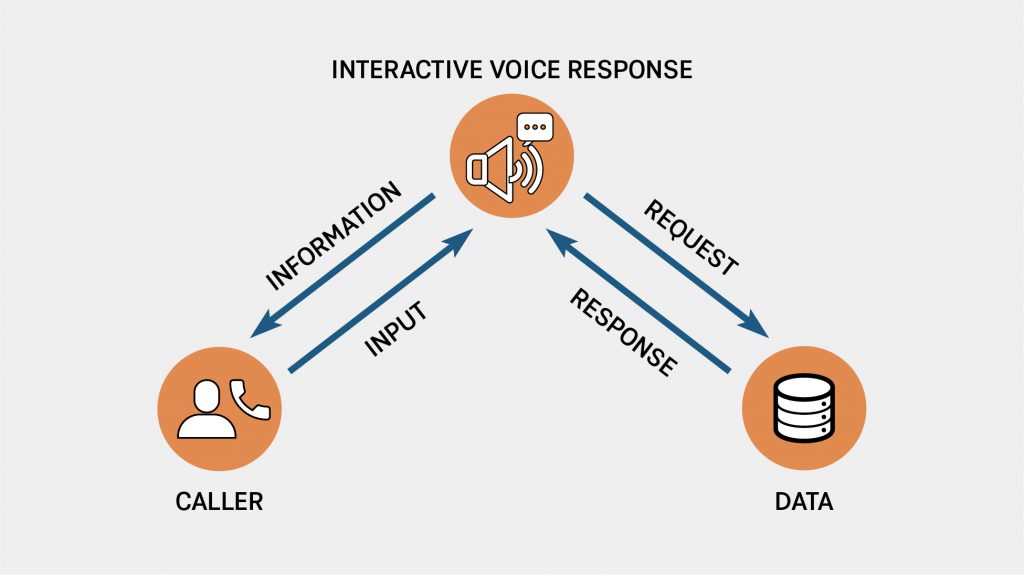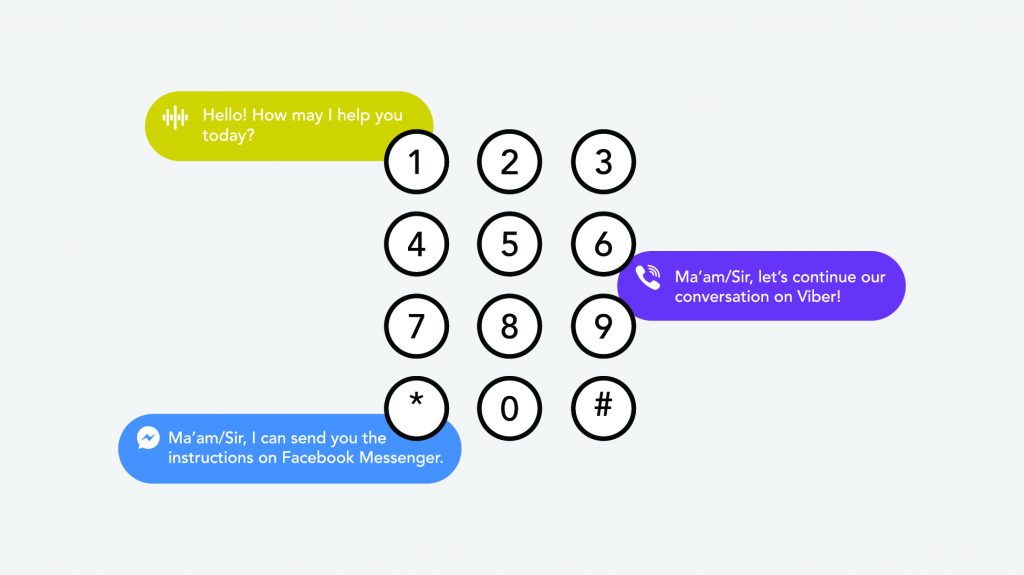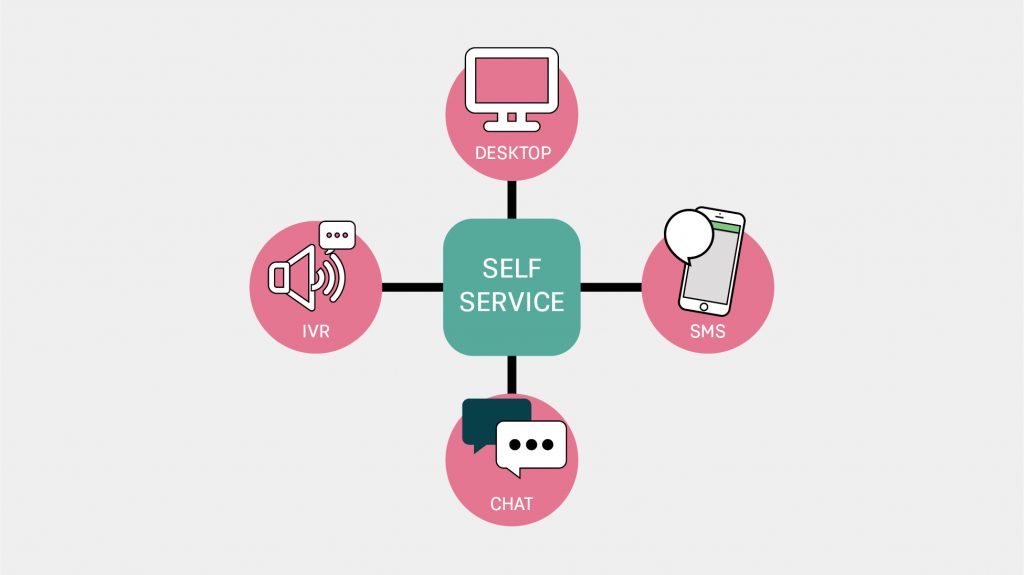6 Components an IVR System Needs for an Omnichannel Experience
Press 1 for Spanish. Press 2 for French, and press 3 for English. I’m sure at some point in your life, you’ve heard something similar during a phone call. In the complicated world of the IoT it’s one of the more ubiquitous tech solutions. Do you have any idea, though, what it’s called? It’s known as an interactive voice response (IVR) system.

An IVR system is a central component of many examples of unified communications software. It powers the bot-like assistant used to route callers toward the help they need. IVR generally allows callers to choose specific commands on the telephone keypad or via voice, before speaking to an agent.
A lot of IVR systems we have today fail to pick up where we left off the next time we make a phone call. Have you ever had a bad breakup, then you forget about everything as if you don’t know them? Or act as if nothing happened? Well, it sort of feels like that, only a little less painful with an IVR system.
Many older IVR systems, too, focus only on call routing. They’re designed solely to direct a caller to a relevant agent. They don’t account for the many digital channels that modern consumers also use for customer service.
Brands increasingly need to deliver a seamless experience across all these channels. It’s what’s known as omnichannel support. IVR systems can help provide precisely that kind of connected and effective service. That’s only, though, if they have some key components. The following are six that can combine to give a genuine omnichannel experience.

1. Speech Recognition for Conversational IVR
More companies are choosing this method over IVR keypad prompts. Instead of choosing from a list of options, customers can use their own words to address their concerns. A conversational IVR will ask a question then let customers answer with their voice. Afterwards, the IVR’s natural language processing (NLP) technology will interpret and assist the customer. What the system does first is to ask a question about the caller’s intent. Then, from the response, it interprets what’s required to finish a task. The best examples may also be able to deal with grammatical errors or unclear speech. The IVR can then direct a customer’s call with greater accuracy. What’s more, these systems can remember what a customer said during a call. They’re details and what they’ve revealed about their issue can get automatically forwarded to the agent to which they speak. That prevents the customer from having to repeat themselves.
2. Voice Biometrics
Nobody likes redundancy. Recite PINs or passwords at the onset of every call feels inefficient, and like it’s a waste of time. With voice biometrics, your voice can be your password. The IVR system confirms your identity by comparing your voice against a “voiceprint.” You make the voiceprint during a one-time setup process in an initial call. Voice biometrics decreases call durations, agent calls, and is simply much more efficient. Callers can complete a wider range of actions without the need to speak to an agent. On top of that, it is safer than other applications. The cost of fraud in call centers has reduced by 90%. Voice biometrics does not just enhance automation and customer experience but also fights fraud.
3. Self-Service
The best IVR systems should help you answer your concerns without the need to speak to an agent. It works similarly to chatbots. IVR systems should be able to answer simple inquiries so that agents can focus on harder tasks. But keep in mind, not every problem can be fixed through self-service. Think about the inquiries that most customers connecting with your IVR will make. Checking the status of an order, making bill payments, or asking after delivery are some examples. Many of these requests can get dealt with via self-service. Integrate your IVR with your CRM software and customers can receive or edit order and shipping information themselves.

It’s also crucial for IVRs to integrate with customer records for other reasons. Information must run smoothly across channels for genuine omnichannel support. It’s necessary, for instance, to forward the necessary data when a customer is transferred to an agent. If a customer makes a call after an interaction in a mobile application, too, the information must reach the agent to which they speak to minimize repetition and effort when dealing with inquiries.
4. A Proactive Channel
Proactive customer service can be another vital element of omnichannel support. IVR efficiency can be improved by introducing a proactive channel. Companies can send reminders or updates to their customers in advance about issues to make calls smoother. Better yet, there would be no need to call in the first place.
How convenient would it be to receive a reminder from one of your channels saying an issue has been resolved before you even planned to call? It’s something that can put customers one step ahead and make any action they need to take far more straightforward.
5. Visual IVR
Visual IVR is a solution for those businesses looking to really shake things up. Rather than a customer navigating a traditional system over the phone, they get routed to support on your website or via a mobile app. Instead of pressing numbers on a keypad to move through a virtual menu, users see the menu on their computer or smartphone screen. They can choose the responses relevant to their issue and even the channel they prefer to use to get help.
Visual IVRs let customers transmit from the voice channel to the digital channel. Customers who are on their smartphone can seamlessly transfer to a web-based support experience that addresses all their concerns. Consistency is crucial for an omnichannel experience. So, a visual IVR is a great way to maximize the capability of these devices. Customers also get a personalized experience simultaneously using their preferred channels. Such unified support can help increase customer loyalty.
6. Analytics
Analytics should be used continually to evaluate the success of any IVR system. Businesses can identify areas that need improvement by analyzing previous calls.
Modern IVR systems should have built in analytics capability. That helps identify how customers respond to different service transactions. The acquired data can be used to resolve any issues, then modify the target area.
Analytics is the reason why companies can continuously update and innovate their systems. It helps spot trends and predicts actions that customers are most likely to take. It is a significant component of an IVR system that can be useful in different areas and one that shouldn’t be left out.
Summary
Customers may not realize it at first, but the primary purpose of IVR systems for service providers is to increase efficiency and improve customer experience.
Today, omnichannel support is vital to delivering the best customer experience. Any IVR system, then, should be a part of the drive toward genuine omnichannel service. A modern IVR system can help you improve the experience you provide customers across the board. It will set you apart from competitors, and more than justify any investment you make in it. What you must make sure, though, is that any system incorporates at least most of the above critical components.
Source: Patton and Samuel O'Brien







